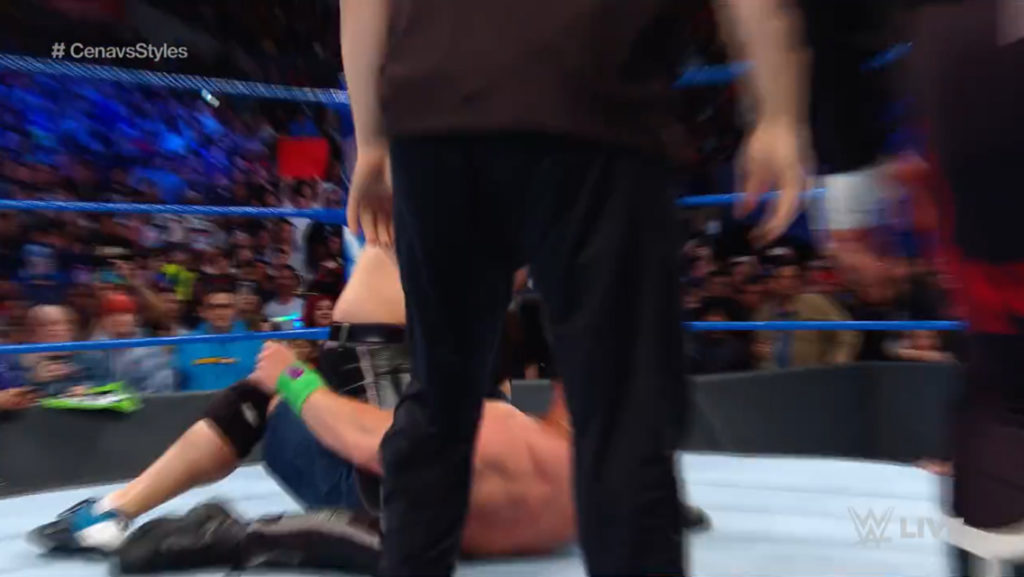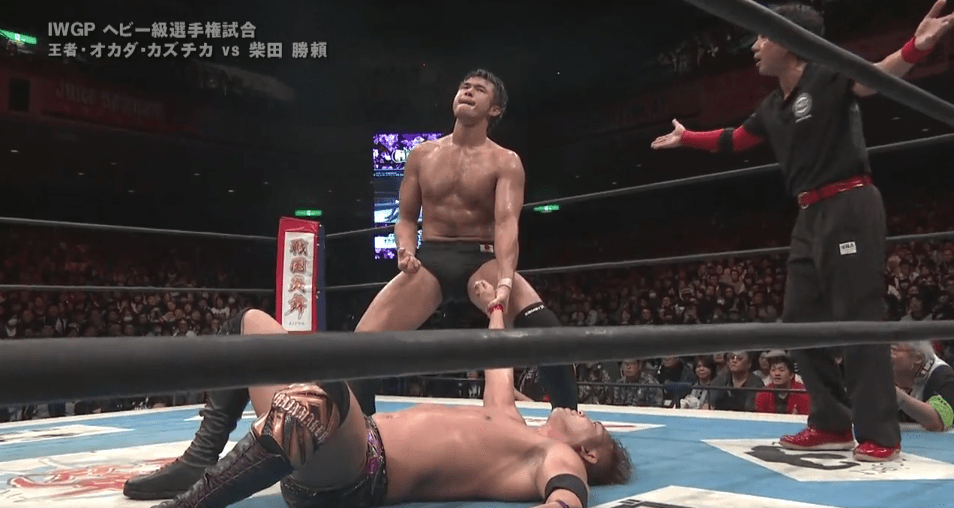WWE’s Production “Values”

If you’ve only ever watched WWE in the past decade or you may rarely notice it. You may feel it when you venture out and watch old matches, or indie matches. Something about the WWE feels more impactful and dramatic. That’s because, after years of practice, the WWE has a standard production value. That means cameras are always in the right place, at the right time, and always subtly adding to the drama. They employ tricks to make the wrestling feel different and more valuable. Where indies are stuck with stationary cameras, the WWE has five or six at all times capturing every moment. It should be a distinct advantage. However, like with so much else in this company, what should be a positive is often painfully negative.
On SmackDown this week it was once again apparent how poorly the WWE’s style is implemented. During a confrontation between John Cena, Baron Corbin, Kevin Owens, Sami Zayn, AJ Styles and Dolph Ziggler the camera cuts 32 times is just over half a minute. The cuts are meant to emphasize the chaos happening in the ring but the overzealous producing results in a mess. It’s break the fourth wall of techniques the WWE adopted sometime after the Attitude Era to make the product feel different. Cameras zoom in and out wildly on hits and camera angles switch frequently during anarchic moments. We see less of a full ring with every participant and more “moments.”
Go back and watch some classic wrestling clips. In nearly every case it’ll be hard to find something akin to how today’s modern WWE looks. Rarely did the WWE employ fake shaky cam to their wrestling and usually reserved it to true chaos like when Austin attacked Mike Tyson. Other companies haven’t tried to replicate WWE’s style either, mostly due to low budgets, but because WWE’s style takes away from the in-ring performance. If a normal DDT is given the same camera shake and zoom effect as a finishing move, then what’s the difference?

It doesn’t stop there. When you watch a match from outside the WWE, it’ll seem boring and less kinetic at first. The camera is typically stationary or, for bigger events, it’ll be ringside but mainly keep the action in frame. Eventually it puts the emphasis where it belongs, in the ring and on the wrestlers. It slows the match down and allows the wrestlers to dictate pace, style, violence, and action. And it means the small things can really start to matter. Kazuchika Okada, NJPW’s long time current champion, is an incredible wrestler and he does something very subtle in some of his matches. It isn’t unique to Okada, but he and NJPW often emphasize it. Wrist control. Okada, especially towards the finishes of matches, will continue to hold onto his opponent’s wrist. Big move, wrist control, finisher, wrist control. The cameras will sometimes zoom in on it, sometimes they’ll ignore it. It’s small addition to Okada’s style and, as time has gone by, this little feature has become apart of him.
I don’t expect the WWE to transform back to 1994 and implement stationary cameras. But it’s a wrestling to sin to fill your company up with the most talented roster in history and continue these practices. It’s another hole in WWE’s already weak armor that I think proves they care less about who is in the ring and more about what it all looks like. Keeping up with appearances only lasts for so long before everyone sees through the bullshit.

